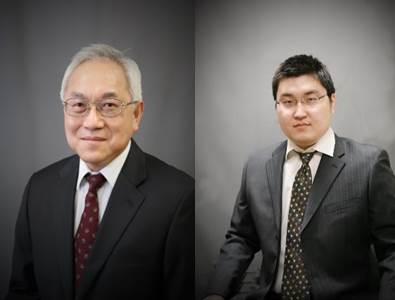West Tech Lunch: Denoise and Residual-Signal Recovery*-Nov 14th

Meeting Location:
Norris Conference Center
816 Town & Country Blvd.
Houston, TX 77024
(Free parking off Beltway-8 northbound feeder or Town & Country Blvd.)
Meeting Time: 11:00 to 1:00 pm
Registration Begins at 11:00
Lunch Served at 11:30
Presentation starts at Noon
NOTE: You Must Be Logged In to Register.
Speakers: Stephen K.Chiu and Tao Jiang, In-Depth Geophysical, Inc.
Noise attenuations are imperative for extracting useful signal from unwanted noise. In this presentation, we examine two aspects of denoising: harmonic attenuation of sweep slips and recovery of residual-signal recovery using a pattern-based method.
There are various high efficient acquisition methods routinely applied in marine and land seismic survey, such as encoded source, HFVS, simultaneous shooting, slip sweep etc. We will focus on the slip sweep type of survey for land vibroseis. Traditionally slip sweep survey takes advantage of linear up sweep to separate second shot (the slip shot) from the main shot. The theory works well with synthetic, however in reality, the vibrator usually can’t generate a clean linear sweep to the ground, but generate high-frequency harmonics of a different order from a fundamental sweep. As a result, the sweep cross-correlation/deconvolution will show high-frequency noise from the cross-talk between fundamental and harmonic sweeps. To get a harmonic noise free record before further processing, different methods are called for to handle the attenuation of harmonics. We will show our solution to attenuate this harmonic noise, which will work on both linear up or non-linear up sweep (cascaded sweep).
However, when data have poor signal contents, most of the filtering algorithms have difficulty to achieve effective noise reduction while preserving primary signal. In general, the industry accepts the tradeoff between the noise reduction and the potential loss of some signals. Although it is desirable to recover the lost signal (residual signal) after the filtering processes, the weak residual signal usually embeds in much higher-amplitude background noise, making it unlikely to be recovered in conventional seismic processing. We develop an innovative method to solve this challenging issue. It first derives the patterns of primary events based on the signal of the data and deploys these patterns to recover the weak residual signal. The key of this method adaptively recovers the residual signal in the areas where the patterns of the primary and residual signal are similar. When the residual signal is not present in noisy data, it does not create visible artifacts. Figure 1 shows an example of 3D CMP gathers focusing on extracting residual undulating primary events. The denoised process brings out the signal from the strong background noise (Figures 1a and 1b). The difference plot (Figure 1c) shows hints of the residual signal. The proposed method does an excellent job in recovering weak undulating primary events (Figure 1d) with minimal background noise after the first iteration of this process. The addition of the extracted residual signal to the denoised data recovers the amplitude loss due to the filtering process (Figure 1e). The data difference (Figure 1f) shows no observable presence of primary events.

Figure 1. A selected portion of a land 3D CMP gather with NMO, showing the recovery of residual undulating events.
Speaker Biography: Stephen Chiu, In-Depth Geophysical, Inc.
Stephen Chiu received a BSc in Geophysics from University of Saskatchewan in 1980; MSc in Geophysics from University of Alberta in 1982; and a PhD in Geophysics from University of Alberta in 1985. He worked for several seismic service providers in Calgary as a research geophysicist from 1985 to 1997. From 1997 to 2015, he was employed by ConocoPhillips to further advance their seismic research. In 2016, he joined In-depth Geophysical, Inc. as the Principal Geophysicist. His research experiences spans all facets of geophysical software development and applications. His current research interests include bandwidth extension, migration, denoise, multiple-sourcing acquisition, and deblending algorithms. He has been a member of the SEG for over thirty years. He holds several patents and publishes over 47 publications.
Speaker Biography: Tao Jiang, In-Depth Geophysical, Inc.
Tao Jiang received BSc in Geophysics from Peking University, China in 2004; MSc in Geophysics from Chinese Academy of Sciences, Institute of Geology and Geophysics in 2008; and PhD in Geophysics from University of Houston in 2013. After graduation, he works as a geophysicist in Upstream Technology of BP America Inc. In 2016, he joined In-depth Geophysical, Inc., his contribution in compressive seismic processing system lead to the starting of the In-depth Compressive Seismic, Inc. His research experiences and interests include compressive sensing inversion, seismic modelling and migration, rock property characterization, seismic attribute inversion and effective medium theory. He is a member of GSH and SEG.
Price List:
|
Pre-Registered |
Late/Walk-Up
|
Member
|
$35 |
$45 |
| Non-Member |
$45 |
$55 |
Student Member
|
$0 |
$10 |